There is an old maxim: “It’s not the size that counts.” But it is not true. Size very much does count, and nothing demonstrates this better than handgun cartridges. The bigger the round becomes, the more power it puts in its shooter’s hands – and power is good. Ask any corrupt politician.
In this article we compare two of the biggest handgun cartridges on the market: the 10mm and the 44 Magnum. They’re very different rounds. Whether you should prefer one over the other primarily boils down to
(A) how much recoil you’re willing to put up with,
(B) how much stopping power you really need at your fingertips, and
(C) whether you prefer a semi-automatic or a revolver.
In truth the 10mm and the 44 Mag are different enough that they are not mutually exclusive. A shooter devoted to enjoying everything this great world of firearms has to offer would almost certainly want handguns chambered for both rounds. But in a strict contest of 10mm vs 44 Magnum, can we really say that one is better? Let’s begin by comparing the two cartridges’ physical dimensions.
| 10mm | 44 Magnum | |
|---|---|---|
| Parent case | 30 Remington | 44 S&W Special |
| Case type | Rimless, straight | Rimmed, straight |
| Bullet diameter | .4005 in | .429 in |
| Neck diameter | .423 in | .457 in |
| Base diameter | .425 in | .457 in |
| Rim diameter | .425 in | .514 in |
| Rim thickness | .055 in | .060 in |
| Case length | .992 in | 1.285 in |
| Overall length | 1.260 in | 1.61 in |
| Case capacity | 24.1 gr H2O | 37.9 gr H2O |
| Maximum pressure | 33,000 psi | 36,000 psi |
10mm vs 44 Magnum Cartridge Comparison
There are three important things to take away when you put the 10mm and the 44 Mag side by side. The first is their bullet diameters. While the 10mm ammunition is a true 40 caliber round with a .40” diameter bullet, the 44 Mag’s bullet is nearly .03” greater in diameter. This slight increase affects its ballistic performance, the efficiency with which it can penetrate soft tissue (known as “sectional density”), and perhaps most importantly the width of the wound channel it can produce. A wider bullet necessarily punches that much wider a hole into its target.
The second is their case capacities. 44 Magnum ammo has space for roughly 50 percent more propellant! It needs this because its bullet is frequently one third heavier than the 10mm’s, but its increased energy should prescribe greater stopping power as well.
The third thing we have to point out is the rim. The rimless 10mm was intentionally designed as a semi-auto cartridge (hence its full name “10mm Auto”), while the 44 Mag’s rim helps it sit correctly in a revolver’s cylinder. There are notable exceptions, like the S&W Model 610 10mm revolver and the Magnum Research Desert Eagle chambered for 44 Mag, but for the most part the question of 10mm vs. 44 Mag really does boil down to semi-auto or revolver.
Which type of handgun you ought to prefer is a much larger question deserving of its own essay.
10mm vs 44 Magnum Ballistics
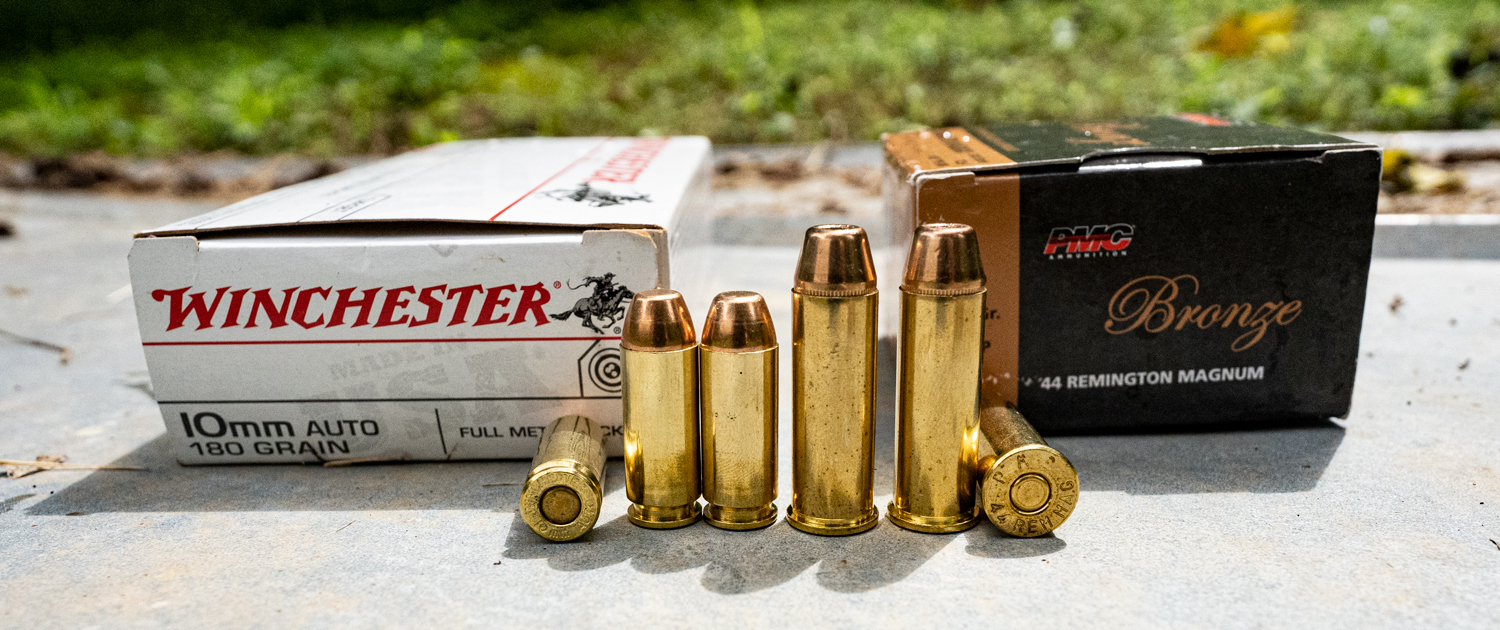
As always, we have to preface a comparison of two rounds’ ballistic performance with a caveat: Performance contrasts remarkably between different manufacturers’ cartridges. Even when they share the same bullet weight and type, a round by Hornady can behave very differently from one by Prvi Partizan.
That said, let’s draw some general conclusions by comparing the ballistic performance of the 10mm and 44 Mag.
| 10mm Hornady Custom 180gr XTP | 44 Mag Hornady Custom 240gr XTP | |
|---|---|---|
| Muzzle velocity (fps) | 1275 | 1350 |
| Velocity @ 50 yds | 1146 | 1230 |
| Velocity @ 100 yds | 1052 | 1133 |
| G1 ballistic coefficient | 0.164 | 0.205 |
| Drop @ 50 yds | -2.34 | -2.06 |
| Drop @ 100 yds | -11.3 | -9.87 |
| Muzzle energy (ft lbs) | 650 | 971 |
| Energy @ 50 yds | 525 | 806 |
| Energy @ 100 yds | 443 | 684 |
| 10mm Prvi Partizan 180gr JHP | 44 Mag Prvi Partizan 240gr JHP | |
| Muzzle velocity (fps) | 1198 | 1542 |
| Velocity @ 50 yds | 1078 | 1381 |
| Velocity @ 100 yds | 995 | 1243 |
| G1 ballistic coefficient | 0.145 | 0.184 |
| Drop @ 50 yds | -2.66 | -1.78 |
| Drop @ 100 yds | -12.78 | -8.14 |
| Muzzle energy (ft lbs) | 574 | 1267 |
| Energy @ 50 yds | 464 | 1016 |
| Energy @ 100 yds | 396 | 824 |
| 10mm American Eagle 180gr FMJ | 44 Mag American Eagle 240gr JSP | |
| Muzzle velocity (fps) | 1030 | 1270 |
| Velocity @ 50 yds | 971 | 1148 |
| Velocity @ 100 yds | 923 | 1059 |
| G1 ballistic coefficient | 0.175 | 0.174 |
| Drop @ 50 yds | -3.44 | -2.34 |
| Drop @ 100 yds | -16.11 | -11.28 |
| Muzzle energy (ft lbs) | 424 | 860 |
| Energy @ 50 yds | 377 | 703 |
| Energy @ 100 yds | 340 | 597 |
The main thing we have to note is the 44 Mag’s greater muzzle velocity. A faster bullet necessarily offers a flatter trajectory, simply because it can cover more distance in less of the time gravity needs to pull it down to earth. How steeply its trajectory arcs isn’t as important for a handgun round as it is with a rifle round since you’re going to be shooting at closer targets. Still, the 44 Mag’s faster bullet consistently drops by about an inch less than the 10mm at 50 yards – that may help considerably with your accuracy.
The 44 Mag generally offers an equivalent or greater ballistic coefficient (a measure of how efficiently a bullet pierces the air) than the 10mm. Its bullet may be wider and accordingly generate more drag in flight, but its added heft gives it greater momentum to fight off wind drift and its greater velocity also helps it to simply overpower air resistance.
10mm vs 44 Magnum: Stopping Power
The 44 Mag’s 240 grain bullet consistently outpaces the 10mm’s 180 grain bullet, even at 100 yards. And because it is so much heavier, it carries significantly more energy at all distances as well.
“Stopping power” encompasses a lot of variables including terminal expansion and penetration depth, but energy is undeniably a large part of it. The 44 Mag’s faster, heavier bullet is always going to pack greater energy than the 10mm – often twice as much!
The 10mm was originally developed to create a semi-auto cartridge that emulated the ballistic and terminal performance of the 357 Magnum. Since the 44 Magnum always beats out the 357 Magnum in terms of stopping power, it comes as no surprise that it trounces the newer 10mm as well.
But here’s the thing: The 10mm is by no means a weak cartridge. Heck, in the past the Danish navy has issued Glock 20 pistols for defense against polar bears! What we have here are two rounds that are both more than capable of leveling a human-sized threat – fast. So, there’s little need to worry about which round boasts greater stopping power for self-defense.
Recoil
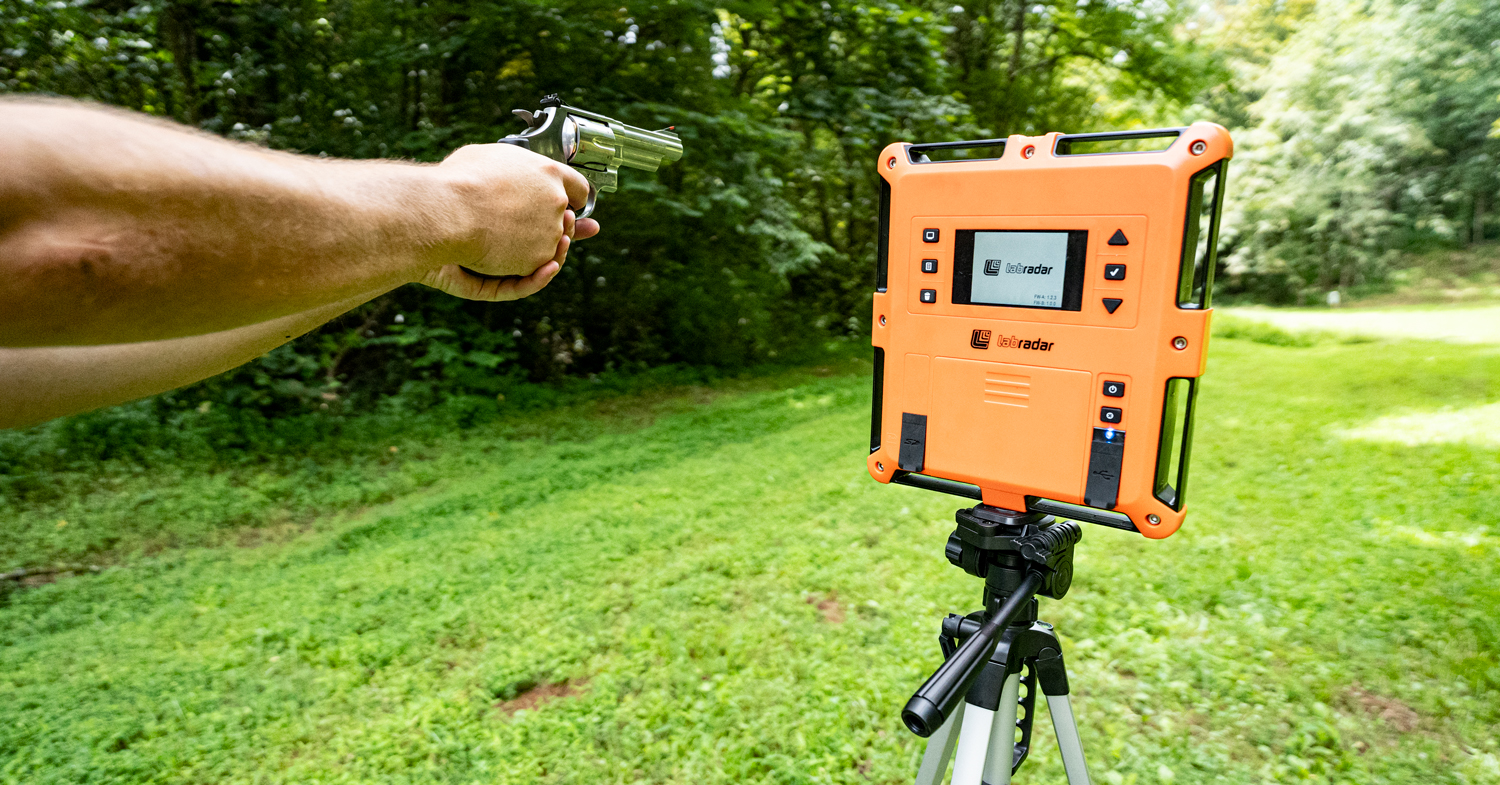
How much energy a handgun exerts back on its shooter as recoil is determined by a few factors. These are largely bullet weight and muzzle velocity, yet the weight of the cartridge’s propellant charge and the weapon that is firing it are also indispensable. Let’s assume all the 10mm rounds compared earlier have 10 grains of propellant and we’re firing a 31 ounce Glock 20. Let’s also assume the 44 Mag loads have 15 grains of powder and we’re firing a 54 ounce Ruger RedHawk.
| Recoil Energy (ft lbs) | |
|---|---|
| 44 Mag Hornady Custom 240gr XTP | 14.96 |
| 44 Mag Prvi Partizan 240gr JHP | 18.62 |
| 44 Mag American Eagle 240gr JSP | 13.56 |
| 10mm Hornady Custom 180gr XTP | 12.79 |
| 10mm Prvi Partizan 180gr JHP | 11.55 |
| 10mm American Eagle 180gr FMJ | 9.07 |
Even though its heavier handgun helps to soak up some of its recoil energy, you’re certainly going to pay for the 44 Mag’s greater muzzle velocity and resultant energy in terms of added recoil. This makes it more difficult to accurately fire shots in rapid succession – which can prove critical for self-defense.
The 10mm itself already approximately doubles a conventional 9mm round’s recoil energy, so training with the 44 Mag is likely to prove even less comfortable. Just remember that how much recoil you actually experience is largely subjective. Shooters who’ve become accustomed to the 44 Mag aren’t likely to complain about it, and many claim to notice no difference when firing the 10mm as opposed to the 9mm.
Price
How useful you’d find these rounds in a fight depends heavily on how much you have trained with them. To do that you’re going to have to buy a lot of ammo (preferably from us, but you already knew we feel that way). To this point you’ll have an easier time affording the 10mm ammo you need. It’s the smaller round. As such, manufacturers simply don’t have to invest as much copper, lead, and propellant into the 10mm’s production.
You may find that 44 Magnum revolvers are easier to find than 10mm pistols, however. The 10mm never became as popular as other semi-auto pistol rounds, and the 44 Mag benefits from a 28 year head start on the market.
As a side note, do take care that the 10mm has a reputation for being “finicky.” While the importance of quality goes without saying, a lot of shooters report that budget-friendly 10mm ammo presents more problems compared to other budget rounds.
Takeaway
The 44 Mag consistently outranks the 10mm in terms of velocity and energy. Of course, its substantially heavier kick may turn off many shooters who are solely interested in self-defense. If you were picking a hunting round, the 44 Mag’s definitive stopping power will prove more effective for boar, deer, and even bear.
A semi-auto 10mm handgun naturally offers increased shot capacity, a faster rate of fire, and an easier time reloading. Its slower, lighter bullet offers neither as flat a trajectory nor as much stopping power, although its lesser recoil means you may have an easier time landing more bullets into your target.
Our advice? When it comes to 10mm vs. 44 Magnum in terms of self-defense, favor the 10mm. Its stopping power is still superior to most semi-auto pistol rounds, and its recoil is already generous. Its handgun is a lot lighter too, since the 44 Mag’s greater power demands an accordingly more substantial weapon. For hunting where one shot means everything, though, the 44 Magnum is the indisputable victor in this face-off.
Or maybe the argument breaks down to which cop you’d rather be like – Sonny Crockett from Miami Vice with his Bren Ten, or Dirty Harry with his S&W Model 29? Your answer to that question could settle the whole discussion right there.

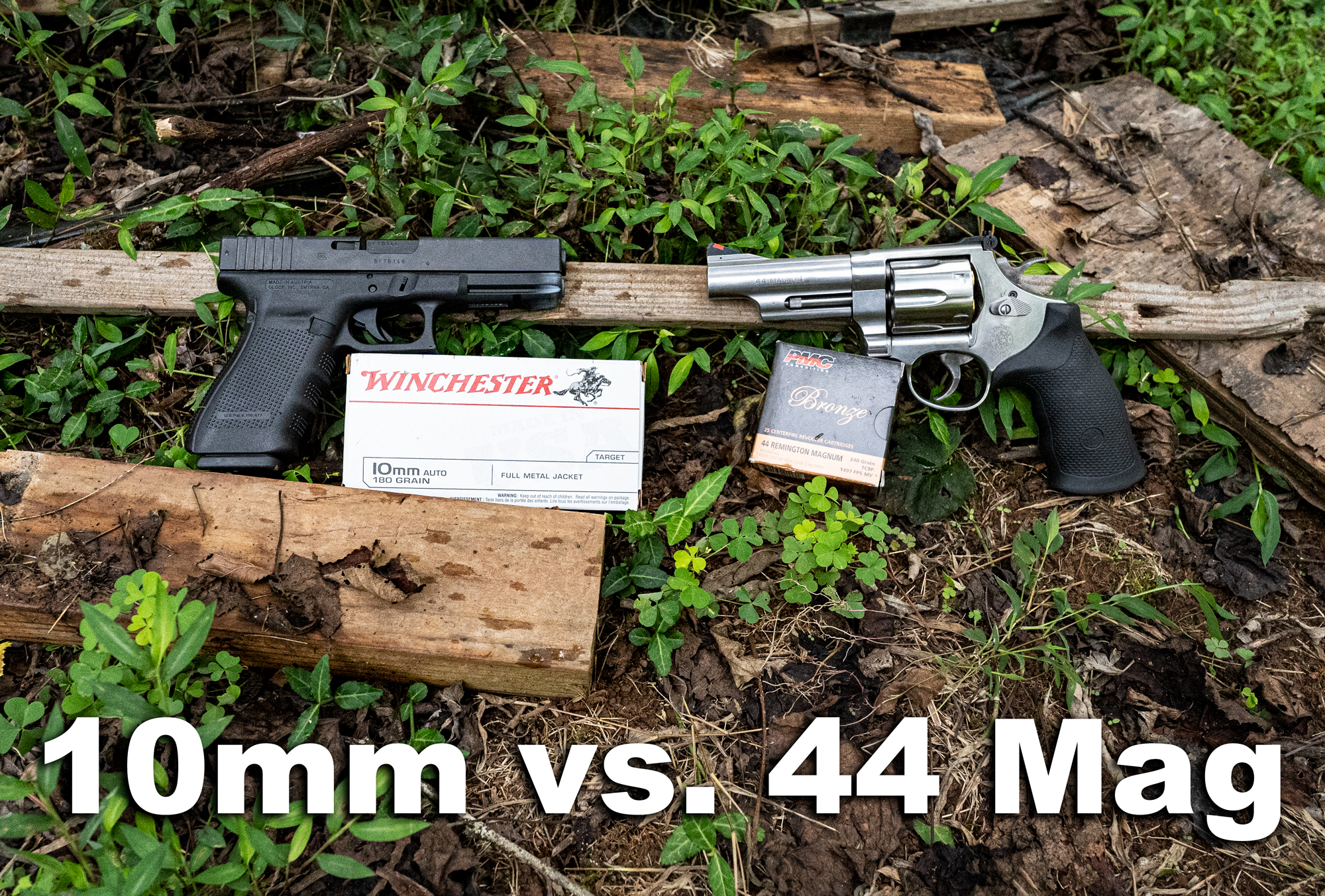
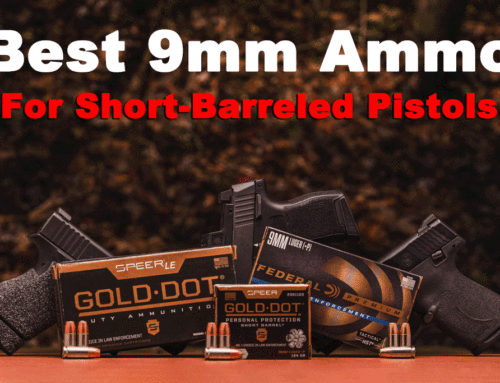
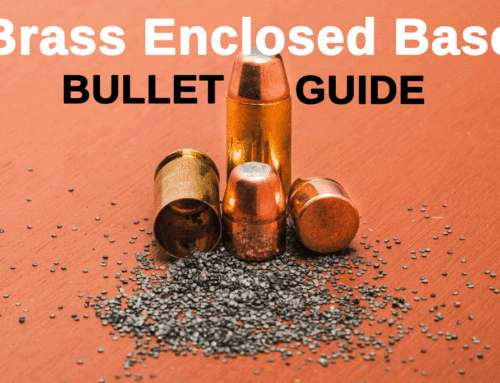
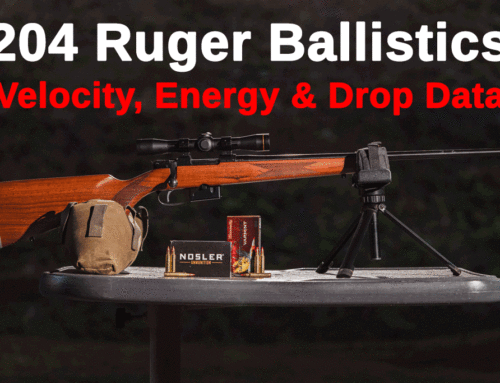
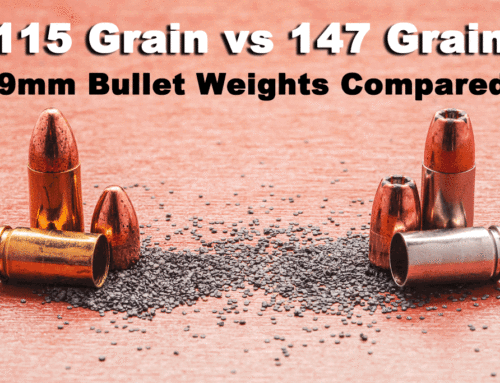
Revolver vs. semi-auto…A .44 mag…more than one shot on a human being… Seriously!?! And if you are in “close-contact mode”, firing a .44 mag at someone, you’re going to start him aflame anyway. Likely to do this same thing with a 10mm. I have both…have carried both. Have shot both under a variety of conditions. The heart takes over…
When I’m afield, I carry a Taurus M44 4-inch on my hip and my Winchester 94 lever action…7 rounds in the Win and 6 rounds in the Taurus, plus 18 rounds in my belt…I’m ready for pretty much anything Texas or Alaska can throw at me…around town, .45 or 5.7 will handle the 2-legged varmints…
I own both handguns. I picked up the 10mm semiautomatic as a more viable hiking protection arm. The Ruger Blackhawk in .44mag is a single mode trigger, you have to manually cock the hammer for each shot. Also only 6 shots and reloading is one shell at a time since the cylinder doesn’t flip out. I figured if a large animal decided to attack I’d rather have multiple shots rapid fire, fast reloading with an extra magazine, and accounting for a moving target, and fear fueled adrenaline. Regarding how they handle, both give up a good kick, the Glock 20 is a little quicker to re-acquire the target.
Although I am a die-hard revolver fan (I own a Super Redhawk in .44 mag and don’t have any semi-autos), I am going to give the nod to the 10mm for home defense. This is because a lot of home invasions are done by a group of people these days. More/faster shots with the 10mm.
Outdoors, against a charging wild animal it’s a toss-up. Sometimes you only get one shot, and both rounds are capable one-shot stoppers.
I always laugh when people talk about muzzle blast and recoil during a defensive shooting. You won’t hear the blast or feel the recoil. Adrenaline will cancel the noise and your grip will become superhuman. Practice your draw from a holster thousands of repetitions and practice with target loads. Fire rapid fire once you have the mechanics of aiming the weapon and firing. Carry heavy loads for defense then pray you never have to use your weapon during a life defense situation.
There is no!!!!!!!! Question that the 44 magnum with a 305 pill at 1200/1060 if u shot straight, it hits with a 1ton sledgehammer in the skull, if your skilled with two hand hold , the second shot , is a another TON punch , there shouldn’t be a need for a third shot!!!
For a woods gun, .44 magnum. I’m in Montana and the bears are not only black bear but, GRIZZLIES. Though a 10mm (and even 9mm) has taken grizzly down, I feel more confident with the potent. 44 magnum over the 10mm.
I’ve seen a adult female with 3 cubs and the cubs were as big as mom. So I have to think worse case scenario. So I always carry 2 firearms when possible and pray I never have to face off with more than 1bear.